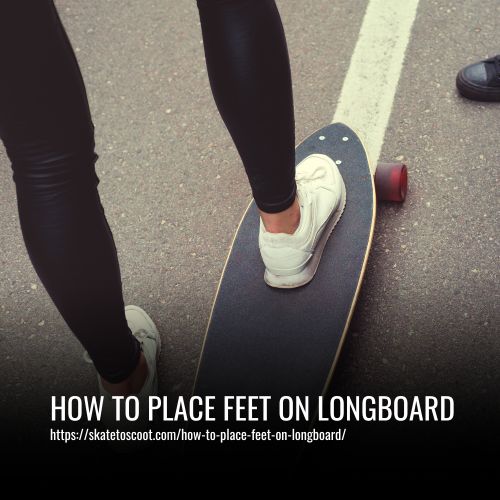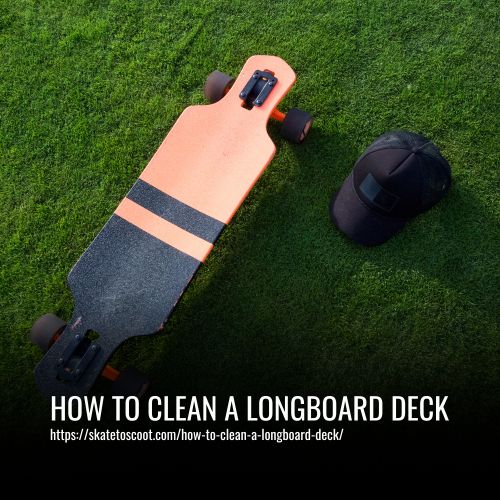As an Amazon Associate we earn from qualifying purchases.
Embarking on the thrilling journey of longboarding, the proper placement of your feet on the board is the foundational key to mastering this exhilarating sport. Drawing from my own firsthand experiences and learning curves, I’m here to guide you through the nuances of foot positioning on a longboard.
With each subtle adjustment contributing to stability, control, and maneuverability, join me in discovering the art of finding the optimal stance that ensures a smooth and enjoyable ride, whether you’re a novice rider or seeking to refine your longboarding skills.

Why Proper Foot Placement Is Important
Proper foot placement is of utmost importance when riding a longboard as it significantly impacts stability, control, and maneuverability. Placing your feet in the right position allows you to optimize your body’s balance and distribute your weight effectively, enhancing overall ride experience and safety.
Firstly, selecting the correct foot to serve as your dominant foot is crucial. If you find it more comfortable to have your left foot at the front of the board, you are considered “goofy” and will adopt the “goofy stance.” Conversely, if your right foot is in the front, you are deemed to have a “regular stance.” Determining your dominant foot helps establish your natural stance, ensuring a comfortable and confident ride.
To achieve proper foot positioning, start by placing strong grip tape aligned with the center of your longboard. This will help maintain stability as your feet grip the board during the ride. Additionally, position your feet in proximity to the bolts but avoid placing them too close, ensuring you have enough space for comfortable movement and board control.
What Is The Correct Way To Stand On A Longboard?
The correct way to stand on a longboard involves a few key elements. Start by positioning your feet closer to the bolts but not too close to allow for comfortable movement and control. Your front foot should be angled at about 45 degrees towards the nose of the board to enhance stability and control during turns. Keep your rear foot parallel to the longboard deck, with toes slightly pointing outward, to maintain balance and control over the rear trucks.
Ensure that your weight is evenly distributed across both feet, with your knees slightly bent to absorb shock from jumps and tricks. Your front foot should be slightly further forward than your back foot to give you more control while riding.
This proper stance optimizes your body’s center of gravity and weight distribution, making it easier to maneuver the longboard effectively. It may take some practice to find the right stance for you, but once you do, you’ll enjoy a smoother and more enjoyable longboarding experience.
What Is The Most Popular Longboard Stance?
The most popular longboard stance is the “regular” stance, also known as a “goofy” stance. This stance involves the rider facing forward with their left foot at the front of the board and their right foot at the back. It has become increasingly popular due to its versatility, allowing riders to easily perform tricks like ollies, shove-its, and kickflips while navigating obstacles.
The regular stance provides greater stability as the weight is evenly distributed across both feet, making it well-suited to street and vert skating. However, it’s important to note that regular and goofy refer to how you stand on the board, not your personal preference or style. Any skater can ride in either stance.
Ultimately, the best longboard stance is the one that feels most comfortable to you. Experiment with different stances and find one that works best for your style of skating. If you’re just starting out, regular could be a good option to get used to riding.
Where Do I Put My Feet On A Longboard?
When it comes to riding a longboard, proper foot placement is crucial for control and stability. There are two main stances: regular and goofy. In the regular stance, your left foot is positioned at the front of the board, while in the goofy stance, your right foot takes the lead.
Regardless of your stance, finding a comfortable position for both feet is important for easy movement. Your dominant foot should be placed in front, serving as the pivot point when turning. The back foot should be angled slightly towards the side of the board, which facilitates pushing off from the tail or nose.
To enhance stability, keep your feet slightly wider than shoulder-width apart and ensure they are firmly placed on the board without dangling off the edge. It’s also essential to maintain a relaxed and low body position by bending your knees. This not only improves balance but also allows for smoother maneuvering during turns.
Where Should My Feet Be When I Ollie?
When performing an ollie, proper foot placement is essential for balance and power. To achieve a successful ollie, your feet should be in a slightly staggered stance. The back foot should be lined up just behind the front truck bolts, while the front foot is placed closer to the center of the board. Keep your feet parallel to each other throughout the trick.
Maintain a centered body position over the board, distributing weight evenly on both feet. As you bend your knees and pop off the tail, press down on both feet evenly to generate power and maintain balance through your core muscles. Having your feet too close together or too far apart can affect balance and reduce power during takeoff, so finding the right distance comes with practice.
As you initiate the ollie and rise into the air, ensure that your feet remain parallel and aligned. This helps maintain control as you clear obstacles or landings. Practicing and refining your foot placement will contribute to improving your ollie technique. Remember, proper foot placement is key, so practice consistently to achieve a successful and controlled ollie.
Should I Lean Forward On A Longboard?
Whether or not to lean forward on a longboard depends on the type of riding you are doing and the situation you are in. Leaning forward can be beneficial in certain scenarios, such as when you are going fast downhill. By leaning forward, you can maintain better balance and control over your board, similar to crouching down on a bike when going downhill. This position keeps you closer to the ground, providing increased stability.
However, when going uphill, it is best to keep your body weight more upright or slightly backward. This helps maintain traction and balance while pushing with both feet. Leaning too far forward on an incline can cause your wheels to spin out, leading to a loss of balance and control.
Ultimately, the amount you should lean forward while longboarding comes with practice and experience. Start with a small lean and gradually increase it as you get more comfortable with the board. Always prioritize safety and exercise caution when trying new tricks or techniques.
Do You Push With the Front Or Back Foot On the Longboard?
When it comes to pushing on a longboard, it is generally recommended to use your back foot. Placing your back foot on the board while pushing provides more power and stability, resulting in a smoother ride. This foot position also helps maintain control during sharp turns.
For flat ground or downhill riding, position your front foot in front of the rear truck. This placement ensures better balance and stability. When cruising uphill, however, place your front foot behind the rear truck for maximum leverage and momentum.
Proper foot placement while pushing also offers protection against potential ankle injuries by providing additional traction on the board. It’s important to note that foot placement may vary depending on your riding style and preference.
Finding the right foot placement may require some practice, but with time, you’ll gain control over your longboard. By honing your pushing technique, you can enjoy a more comfortable and safe ride every time you hit the streets. Experiment with different foot placements to determine what works best for you.
How Do I Know If I’m Regular Or Goofy?
To determine whether you have a regular or goofy stance on a longboard, there is a simple test you can do. Stand on a flat surface and place a flat object, like a magazine or piece of paper, on the floor. Step onto the object with one foot and pay attention to which foot feels more comfortable in front.
If your left foot feels more natural in front, then you have a regular stance. On the other hand, if your right foot feels more natural, then you have a goofy stance. It’s important to note that this determination is not permanent and can change over time.
Ultimately, finding your preferred stance will take practice and experimentation. Try out different stances and see which one feels most comfortable for you. With experience, it will become easier to determine and adapt to your preferred stance.
Why Do My Feet Hurt When I Longboard?
When longboarding, foot pain can be a common issue due to the stress and pressure placed on the feet. One of the most common types of foot pain experienced by longboarders is plantar fasciitis, which occurs when the muscles and connective tissues in the bottom of the foot become strained or overworked from the repetitive pounding while skating. In addition, longboarders may also experience arch pain, Achilles tendonitis, and heel spurs due to the repetitive motion involved in riding the board.
To prevent foot pain while longboarding, it is important to ensure that your shoes are properly fitted and offer adequate support for both impact and lateral movement. Taking regular breaks during your skate session to allow your feet to rest and recover can also help.
Keeping your feet and legs warm with the appropriate clothing is crucial in reducing potential soreness. Lastly, it is recommended to stretch both before and after each skate session to keep your muscles flexible and alleviate any pain associated with longboarding.
FAQs
The proper way to stand on a longboard is to have your feet shoulder-width apart, parallel to each other, and positioned across the width of the board.
This depends on your dominant foot. If your left foot is dominant, you will have a regular stance with your left foot forward. If your right foot is dominant, you will have a goofy stance with your right foot forward.
Most longboarders push with their front foot, as it gives better balance and control. However, some riders prefer pushing with their back foot. It’s all about personal preference and finding what feels most comfortable for you.
Feet can hurt due to improper foot placement or wearing ill-fitting shoes. Ensure that your feet are positioned correctly and that you are wearing comfortable, supportive footwear while longboarding.
Conclusion:
Mastering the art of placing your feet on a longboard is the first step to unlocking a world of thrilling adventures and endless possibilities. So, whether you’re a seasoned rider or a newbie just starting out, remember to find your stance, trust your instincts, and let the rhythm of the road guide your every move.
With practice and determination, you’ll be gliding through life with style and grace. So, grab your board, find your balance, and let the journey begin!
Amazon and the Amazon logo are trademarks of Amazon.com, Inc, or its affiliates.



